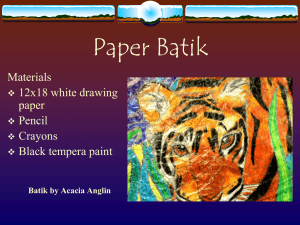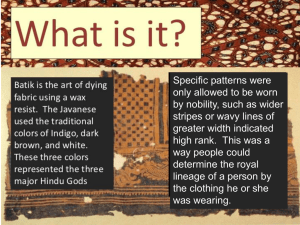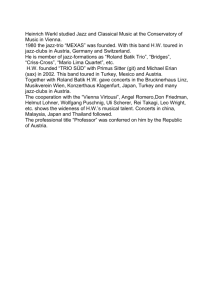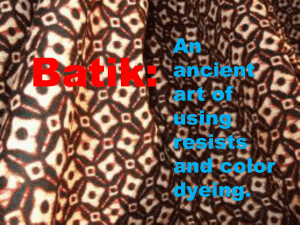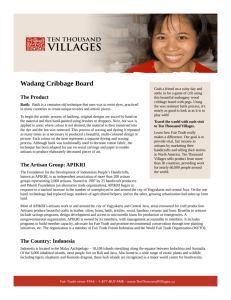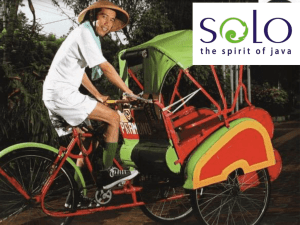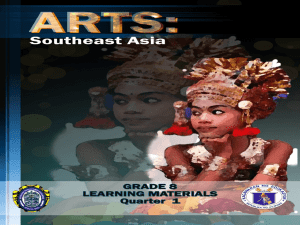ny f;fsienfif,ic I Glesearch G.enter
advertisement
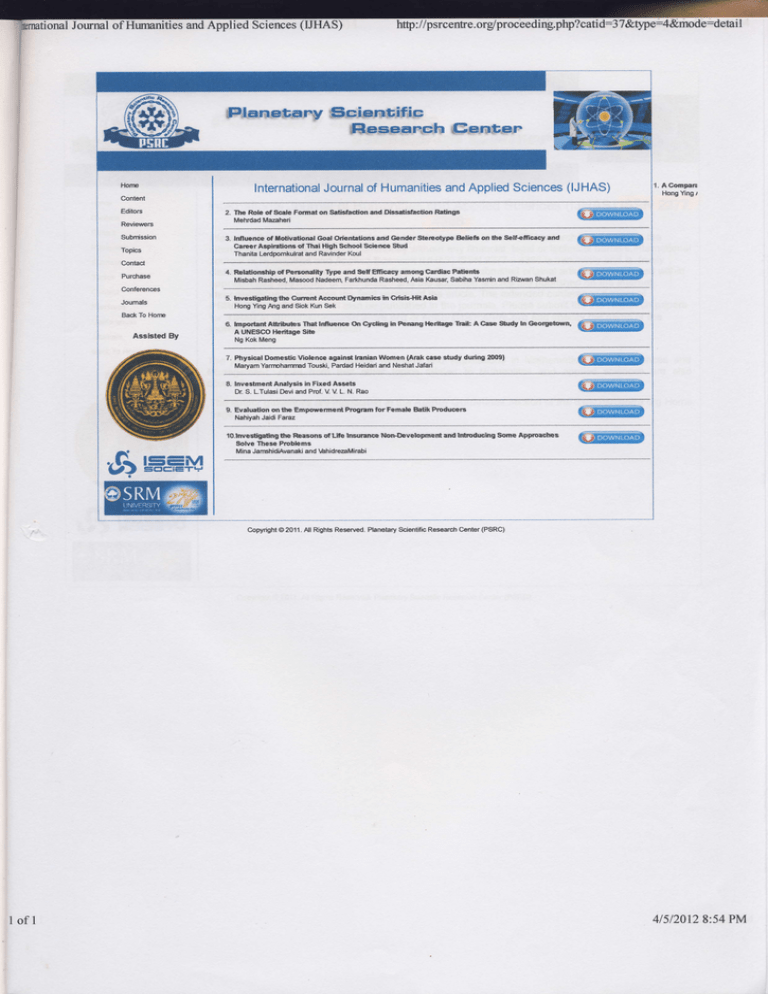
Journalof Hunanitiesand
proceeding.php?catid
Sciences(
ny f;fsienfif,ic
G.enter
Glesearch
I
f
International
Journalof HumanitiesandAppliedSciences(IJHAS)
|ldre
Contgnt
Edito6
ACmpaG
l-bng Ying /
a *Ro""*t*"
Melrdad MDhdi
ReviffF
subnission
Topbs
Contad
Purdtse
Selieltdlh€
G.filerSi.noOrF
otfotiEttofil
Go.t oried.liffi.*d
3. htle@
Caer A:DiralioG ot Tnai $rqlr Sclr@l Scieffi Sftrd
Thsnits Lardrmkulrat and Ravinds Kql
Sett€tfErqrrnd
.ffffim$mff,Jffiilif;ffiffffif;Hlffi***dRi*nshuk,,
(mE@D
@!@D
Conteren@s
Joumals
5. tlcriligdirgl|Demrtt@uttDtlmi!€ih&bin-l{tltb
Hong\tng Angand $ok KunSsk
ffi@s
Bad( To Hom
Asslsted By
ftteub!
lH|rlftFu
tnFfffi
A Ut{ESCo tieritage Slb
Ng Kok Meng
on Qdi€
in Fqnrr9l|e,rhtse irdiL Ak
Pbysi€l Domdic viobne agaimtksnianwsen (Arat€*
Maryam Yamha|md
Taski,
shdt h c.otgttwrr'
rtudy dsiog 2qt9l
Padad Flsidari and Neshat Jafari
9. Evdutlm m3? EmpdomeriPt!€mtorFemale Bd(hofrG€
m.rwestig{ttsrlttstuamsd|-trelur&*t*Fep€lolrrrstrnaffiftgsoeAp$o*tns
SolvG The* PDblEms
Mina JaGhidiAwnski
and \Ahid@MiEbi
€ffi!@p
t5=M
sclci-'r'H
Copyrigtrt @ 2011. Al Rights Re*Ned.
l of I
1ffi@@i@
€[@!s!!l
tlahiyah Jai6 Fa@
6
1@@[|
Planeiary Scientinc R*arrh
C€f,€r (PORC)
4/5l2Al28:54PM
Hurnanities
pages.php?
i d=| 9&type:4
lPlanetary
HofrE
{Eici.entif,ic
Hes.eanctil
G.enGgr
InternationalJournal
of Humanities
andAppliedSciences(IJHAS)ISSN2277
4386
ffi
Editors
RevieuErs
Subtrission
Topics
Contact
Purcfle
Coriferences
Jrumals
PlanetaryScientificResearchCentreprovidesfree accessto scientificresearchinformationto the
intemationalscientificresearchcommunitywithout any financial,legal or technicalbaniers.lntemational
Journalof Humanities
and AppliedSciences{IJHAS)ISSN2277* 4386is bimonthlyand is freely
dbttibuted on the intemst and mobiled$ihalmedia.The $rbmitt€d oriShd artides are revbrcd wfrhil
approximately
two monthof submissionand the acceptedarticlesare publishedon the internet
immediatelyupon receMngthe final lersion of the article.The e*ended conferencepapersof
PSRCentreconferences
will alsobe publishedin thejoumals.Pleasesubmilthe the Researchpapers
for IJFIASat submission@psrcentre.org
or editor@psrcentre.org
and specifythe nameof the
joumalat the timeof submissbn.
Ba{t To HonE
Assbted By
The joumal focusingon theories,methodsand applicationsin lt/lathematics,
Social Sciencesand
Management.Apart from that other topics related to Humaniitesand applied sciencesare also
cover€d.
Theauthorguidelinesare mentionedin the Author Guidelinessec{ionof the w$/wpsrcentre.org
Home
page.
t5=M
SCtCi=TH
Copyright@ 2011.Al Rights Resened. PlanetaryScientifc Res€arch Center (PSRC)
I of I
4/512012
8:56PM
,tij,.,,
International
Journalof Humanitiesand AppliedSciences(IJHAS)Vol. 1 No. 1
Evaluationon the Empowerrnent
Programfor
FemaleBatik Producers
NahiyahJaidi Faraz
AbstractThis research aims to evaluate women
empowerrnent programs: entrepreneurship awareness, daily
income, and institutional strengthening of female batik
producers in N,lendiro, Gulurejo, Lendah, Kulonprogo,
Yogyakarta. The program evaluation model used in this
research is Logical Framework Model. The population is
about 85 people. and all of them are responderrtsof this
research.Regarding the similar characteristicsof the batik
producers, ihis research used purposive sampling, with
QUEST program as the validity and the reliability,
mathematical descriptive (mean and percentage) as the
analysis technique. The researchresult shows that ihe income
of the female batik producers are higher after adopting the
program, namely about IDR 350.000 - tDR 500.000 permonth. Female producers also have high entrepreneurship
awareness.There is a significant increase in businessskill
both qualitativelyand quantitatively.Their businessawareness
and network are also increasing, as evidenced by the
establishment of 8 groups of fenrale batik producers arrd
"Lumintu" cooperation.
Ke1u,or ds- businessmanagement,logical fiam ework model,
women empowerment.
I.
INTRODUCTION
'Mendiro' is one of villages
in Gulurejo, Lendah.Kolonprogo.
This village is well-known of its batik pmducers.Mendiro's
environmentsupportsthe productionof batik. This is due the
condition of the lands which lack fertilty and therefore unfit
argricultural activit-v. Therefroe, most of the village nembers
are not farmer. The problem lies on the fact that hundreds of
batik producers rey on three empoyers. These micro business
results in the inability of the emplovers to pay appropriate
wage and certain contract. Therefore, the rvorkers are the
heelanceones. One piece of fabric earnsRp. 15.000(fifteen
thousand).ln a month they can eam around Rp. 150.000.This
is becausethe worliers spendonly one third of their time.
Around 129 people,mostly women, who are skillful in
batik. Their skill in batik is a family inheritage. young
females were used to doing batik since their childhood.
Almost all people in Mendiro, therfore, are able to do batik.
The workers were used to work in Yogyakarta, Bantul and the
surroundings. The working places are quite far, around 20-30
Nahiyah .laidi F'arazis Lecture of Yogyakarta State University, Indonesia
Ernail: nahiyah@uny.ac.id or naftiya_j fi@yahoo.conr
43
krn from the village. Tlre earthquake hit Bantul and
surroundingin 2006 make them losl the job. Their husbands
rvhosejob mostly sandminer earn very low amountof mone,v.
liom IDR 20.000 to IDR 30.0000 in normal days and IDR.
15.000in flood.
From above illustration, the main problem is how to
empower f-emale workers' wealth by uplifting them from
labour to be independent owner of batik busines. Some
obstacles they face are the limited access of the female
workers in credits, market, managenent and business
development information, limited skill to gain opportunify,
and low social assurancefor female workers. Besides.solne
potentials to develop fiom the workers are a) good skill in
batik supported by the village authorities, b) members of
family support theor women to do batik.
Directions on how to develop the businessin batik through the
knowledge on qualified production and entrepreneurship
would help the workers to be self-directedand at the end
would help them earn nrore money. Therefore, women
empowerTnent cannot be separated ffom any policy frorn the
authorities.Since five years ago. the women ernpowerment
program in Indonesia is clearly state to integrateinto the grand
program fiom the central to local govemment. The
empowerment program for the female workers in Gulurejo
village in 2009 are: a) training on management,b) supervision
on the businessactivity, and c) supervisionon the establishing
ofgroups ofworkers.
This progranr aints are: a) increasing the female
workers' skills of batik basedon scienceand technology,b)
increasing the income, and c) strengnteningthe institution of
female batik workers. This program needs to be evaluated on
the point of the use of scienceand technologyin the relationto
increase the income of the workers and to strenghen the
institutionof the femaleworkers.
II
LITeReruREREViEw
a. Small BusinessDevelopment
The small business empowerrnentbecomes more slrategic
since the it has potentialsof the small businessin moving the
economyin societyand as the sourceof income.The existence
of the small businessin 2007 reached49.84 million unit of
businessand played 99,99oArole in national economy. It is
undoubtful to say that in national economy the small
enterprisescontribute much in absorbing workers and support
Domestic Brotu Product.national export value, and national
investation. Research by Nur Afiah [5] shows that small
enterprises contibute in economy and development of
lndonesia.And the specific challengebusinesswomen face is
the capabilityin enterpreneurship.
(IJHAS)
Vol.1 No.1
andAppliedSciences
International
Journalof Humanities
in lndonesiaface
Facingthe CrisisEra, small enterprises
Kuncoro
obstacles.
Mudrajad
some
t4] mentions the
followings.
l. Thereis no clearjob divisionbetweenadministration
and operation.Most enterprisesarerun by the owner
acting also as the managerand hiring membersof
family.
2 . The accessof the smallindustryto formalbankingis
low. Therefore,the businessactorstend to rely on
their own capital or on family's mon€y.
Most of the
J.
The absenceof legal for the enterprises.
businessareindividual business.Only 4.7o/oof the
business has individual legal. 1.77o owns legal
acknowledment
like PT,CV, or Firm.
4. The trend of export value shows fluxtuative export
commodityn 1999-2006.
5 . Procurementof raw materialsis the biggestproblem
encountered,rnainly dealingwith an expensiveprice,
limited availability, and relatively far distance,
especiallyfor export-orientedenterprises,wheremost
of the raw materials needed are from outside the
region.
6. The main problem faced in meting the workforce
needs are that the numbers of unskilled labor is
relatively easier to obtain, and the labor costs are
expensive.Regenerationof artisans and skilled
workers is relatively slow. As a result, in many
centers has a shortageof skilled labor export to
certainsectors.
7. In the field of marketing,the problemfacedaremany
competitorsaremovingin the sameindustry,relative
lack of foreign language skills as an obstacle in
negotiating,andpenetation of overseasmarkets.
b. Model of Evaluation
Logic model is one of programevaluationsmodels
with the followingapplication[3].
1. Clari$ing what is realty intended in a project or
polecy.
2. Enhancing communication among project team
member.
3. Managingtheproject.
4. Designingan evaluationplan and determiningthe
questionsbe addressed.
5. Documentinga proje€t andhow it worked.
Thereare someof Logical Frameworkmodel such
as:.UW-F.xtercionProgram Developmenl,Sarders & Sullins
logic model and Logic Modelfrom Valadez& Bamberger.
Eachof them will describein somefiguresbelow.
Program Action - Logic Model
)w)q
ffi
r;;-_l
l*"
lssil
l*"*
l'*l
l*'
H-3
II
-
|
cddF
ffiff
=Y
I
!m;t.
ffi
lM.el
lHdd
I
It"r*t
I
lrFb.rsY
lHFr
I
I
drurq
ltuEF6
l*loo.*
I dlcrlmr
lsffi
I
lfrh
lk*.
Mrfr
lffitD
lffi
uehn
luutrn
lhFd.tL
r@lMlCqm.
h
x4d.4tr
l&b'E
I Ex*t
lu
&ifrt
lM.
lCe
srin'
I
c'F6
&ges
lu'i
o*.o
ls@'rb
Evaluation
Foq6 - Colocl Dttt.
iftCyrc $d tnFFaf
- fuDo.l
Source: UW-ExtensionProgram Development(2005).
Figure I : Evaluation model ofUlfl-Extension Progrom Detelopment
International
Journalof Humanitiesand AppliedSciences(IJHAS)Vol. 1 No. 1
Intermediate
)
Outcomes
F
Ultimate
Outcomes
htil-""-"tt
Activities
Input
)
Output
, __-
Figwe 2: Sanders & Sullins Logic Model
GeneralGoals?
Purpose?
Outputs?
Inputs?
Figure3: Logic Model.fiomValadez& Bamberger
Examing a program or constellation of projects Valadez
& Bomberger (1994) also proposed Logical Frqmework
Analysis. They mention there are 4 steps to have LFA are:
general goal, purpose, output, input [l0].
c.
d.
e.
f.
g
Iil
RESEARCHMETHoDoLocY
This study employs Logical Framework Analysis Model by
Yaldez & Bamberger [0] this model has several advantages.
It is more comprehensive and complete for capturing
information, becausethe object of evaluation is not only the
result (output) alone but also includes the input, goals
fuurpose) and the final target (general goals) along with its
indicator. This is also easy for monitor and evaluation (M &
E) that is as follows.
1
The End Target (lGoals) is to increase the income of the
women batik craftspersonsin Mendiro, Gulurejo, Lendah
Kulonprogo per month.
2
Purpose
a. lncreased business skills of women batik artisan
basedscienceand technology.
b. Increasedincome women batik artisans.
c. Institutional strengthening of the women batik
artisans.
3
lncreasedproduction of batik designs.
Improving the quality of batik production.
Increasedproduction volumes of the handmadebatik.
Increasedsalesvolume of batik.
The fomration of community groups and batik
altisan.
, Inputs consistof (1) TrainingMaterials(2) Infrastructures
q'
(3) Motivation(4) Environment.
VariableIndikator :
l. Goals
The income of the batik worker increaseat least from
IDR 350.000to IDR. 500.000per month
Purpose
a. Number of people involved in the trainingt
b. Assesmentto the training implementation
c. Income per month
d. Numberofgroupsestablished
3. Output
a. The implementation processof batik production.
b. Selection of equipment used in producing batik
d
Output
a. lmproved processofbatik production.
b. The use of batik production equipment based on
scienceand technology.
f.
G
b.
45
(especially the coloring process.
The number of handmadebatik production design.
Quality of the handmadebatik products.
The volume of handmadebatik production.
Salesvolume of batik.
Tlre number of group members and women members
ofthe community of batik artisan.
International
Journalof Humanitiesand AppliedSciences(IJHAS)Vol. 1 No. 1
Completenessof the information generatedfrom the Logical
FrameworkAnalysis Models by Yaladez& Bambergerwill be
able to provide a better basis to make decisions, policy and
programming for the next programs. ln addition to having
advantages,Logical Framewolk Analysis Models by Valadez
& Banrberger has limitations in measuring the inputs and
results in a broad sense that involves many parties and
requiresmore time and cost.
The main activity of the women empowerrnentprogram
are:
a. Businessmanagementtraining for batik artisans.
b. Assistanceto the implementationof businessactiviry".
c. Assistingthe establishmentof conrmunitygroupsand
cornmunity for handmadebatik artisan
Subject of the research is the batik workers in Mendiro,
gulure.jo,Lendah, Kulon Progo whose skill in producing and
marketing batik and in reading and writing. There are 85
women batik a(isan as population and sample. The use of
purposive sampling is to group respondents with same
characteristclike having ability in both producing batik and
reading and writing. The data collection technique includes
interviews, observation and queslionnaire. The data is anal-vze
using somemethod suchas:
l. Test questionnairewith the QUEST programto know
the suitability and reliability of test items.
2. Techniques of data analysis used was descriptive
mathematical by calculating the averages and
percentages,
The result of the test with QUEST programshowsthat all
l0 items to measureth benefit of the training,precisionof the
materials, and rnethod used fit the correct itenrs. Besides,the
reliability shows 0.76 in index meaning that this is reliable
(result aftached).
a. Educational Level of Women Batik Producers
The education level of the batik r,r'orkersin Mendiro
Gulurejo, Lendah, Kulonprogo shows the greatest level of
education attained is 92oh of primary school graduates.
Graduatesof junior high and high school graduatesreach
5 . 8 %t 2 . 2 % .
SMAZ.2%
ESn fSl,lF
Sarjana0%
O$!.r.i ft5'irrr,r*;r
Chart 1.
Education level of women Batik Craftspersons 2009
b. Age of Women Batik Craftspersons
Age of the craftspersonsis dominatedby 38 (44.71%)
personsin 3l -40 yearsold.34 peopleor 40o/oare in 4l - 50
years old. Only 13 people or 15.299hwhoa are in 2l - 30
yearsold.
?'[ - 3Lt|.tr
l5 ?$rii
IVDISCUSSION
The interview results in information about success
stories, the obstacles they face in batik, potential and skills
they have, the main problems they face, and their future
expectations.The resultsof this questionnairein the intervierv
become significant considerationin making policy. First, it is
3 l - ' 1 0' t h .
.14.? 1':i,
agreed to fom groups- Second, they agree to the kaining
activities, especiallyto improve product quality and increase
the motivation for self-employed producers.Third- they agree
to get assistancein doing do batik.
The main activitiesare the training and mentoring.Both of
thesemain activities include:
tr:tr' ,4firh
841 511:h
lll
3fi 1lr
a. Socializingand discussionon activities.
b. Formationof gloups.
Chart2.
c. Preparing site (land) for group activities.
Age of women Batik Craftspersons 2009
d. Developing practical modules for the design and
batik skills.
e. Motivation
and
skills
lrainins
on
batik c. lmplementafion of the Training
There are 85 training participant that divided into
entrepreneurship.
eight groups. They received training materials about gender
Provisionof equipmentand raw materialsbatik.
equality and equity, Entrepreneurship,Business Managenrent,
o
Promotion and searchfor new nrarkets.
D'
Marketing.
Technology,
and
h . Mentoring on sketching, dyeing finishing, and Applied
As for their assessmentof the implementation of training
marketing
activities show encouragingresults narnely: They strongly
i . Preparationand productionprocessofbatik.
(52%) and agree (47%) u'ith the training material
ageed
Marketing batik products
J.
lnternationalJournalof Humanitiesand AppliedSciences(IJHAS)Vol. 1 No. 1
provided, with the methods used in training, and benefit for
less approving.
their businessdevelopment.Only l% of them are expressed
TABLE.I
WORKERS
oF TFIETRAINING
FORFEMALE
EVALUATION
very
No
Asree
Uraian
{4)
Agree
{3)
1
I
JL
29
I
JJ
l6
2
The material of gender equity and fairnessis
oresentedclearlv
Clear materials on enterpreneurships
J
Clear materialson businessmanasement
38
l5
Clear Marketing materials
22
22
l5
25
36
l8
25
20
I
5
6
Appropriate method of lecturing with question
and answer technisues
Precisemethod in problem solving
Less
Asree
Disagree
{0)
I
The training addsknowledge
7
I
The training benefitsour trusiness
2A
)z
9
The training needsto be done for other
members
t8
20
l0
The results of the trainins would be done to
developthe business
22
261
z
a l
J I
228
5
0
Sumberdata primer
d. Production and Production Processes
There is an increasedproduction ofbatik design shorvedby
the addition motif ftom only tamplek motif into galaran and
pletuk motif. Weekly, a woman can finish two pieces of fabric
two meters each. After receiving material aids and assistance
from YCAP and Centre of Women Studies UNY, eachworker
can finish around twenty pieces. This makes different from the
previous condition where each acts as iabor and earns around
ten thousand rupiah per day,
llhe process of batik production process shows that the
rvorkers have paid attention on the coloring. They do not
merely dip but they also pay attention on the dosage of the
chemical liquid used and hand flattening. They also use the
rubber gloves as well as the stainlesssteel utensils. The use of
logo and plastics in the handmade batiks attracts customers
more. As a result, the workers become more confident in the
production processes.
e. Income of lHonrrenBatik Producers:
The income of the batik producer is known that the
total average income of the women every month can reach
47
IDR 450,000 (four hundred fifty thousand rupiahs), which is
above the target of IDR 350.0000per month (lDR 450,000 >
IDR 350.000). Furthermore, viewed in detail, there are four
(3.52%) women batik producers whose income is IDR
300,000 (below target). In addition, a women batik producer
can earn twice of the target that is IDR 700,000. Thus the
overall batik producers who meet the income target are 8l
persons (96.48%), which can then be said to be effective
because the results obtained exceeded or greater than the
expected results.
Based on the results of businessmanagementtraining
activities it shows a significant increase in both the business
kills like design variation, production and sales volume and
quality of production processesas well as the income level
that is exceeding the target. the women batik producers
through meetings and socialization have fonned a group of
eight (8), each group is with an averag€ often people. ln
addition. they have also established community named
"Lumintu" which consists of eighty-five (85) women batik
producers-
International
Journalof Humanitiesand AppliedSciences(IJHAS)Vol. 1 No. 1
TxeLF-2
INCOME,
PE,RMoN'fH PLii,PERSON
No
lncome
per month/per person
Frequence
IDR & Percentage/7o
I
IDR 300.000
J
IDR 940.040t3j2%
I
IDR 350.000
I
IDR 354.000it.17%
3
rDR325.000
6
iDR 1.950.00017%
a
IDR 400.000
3
IDR 1.200.000t3.52%
5
rDR450.000
20
IDR 9.000.000t23.53%
6
tDR475.000
l0
tDR 4.750.000t11.75%
IDR 500.000
25
rDR10.250.0Q0/29.41%
8
IDR 550.000
9
rDR4.9s0.000110.s9%
9
rDR600.000
1
IDR 4.200.00018.24%
10
IDR 700.000
Total:
rDR 700.000/1.17%
rDR38.250.000/100%
85
rDR450.000
Mean:
f. Cross Sector issues
l. Gender in equality that occurred in Mendiro is based
on the fact that the education of the husbands is
relatively higher (average of junior high school
graduates) compared to those of their wives (an
average of primary school graduates). The result of
in-depth interviervs with batik artisan is indicatesthat
the husband does almost all activities in the
household decision-making.Meeting at the level of
RT, RW and village are attendedby their husbands.
2. Batik artisansare generally less educatedmothers but
have the responsibilig to make a living to support the
family income. Most of the Mendiro men work as
and miner (at Progo river), agricultural laborers,
bricklayers or car renter, and mobile vendors. In
general, the earnings of women batik workers in
Mendiro per month is approximately IDR 100.000
While the male is generally more than IDR 300.000
monthly.
3. In Mendiro, there is no wastewater managenrentas
well. Wastewater is wasted just around the well (the
source of drinking rvater). The reason they do not
make a hole is because the very little amount of
wastewater. Once, a nember of village protested the
disposal rvater of batik, which he thought polluted his
well. Sincethen the artisanwho are divided into eight
groups created for the wastewater infiltration holes
away from the well of the citizens.
2.
3.
have the aspiration to make a greater effort to rnake
batik major businessin their life.
The existence of the social solidarity of mral
communities is high. When there is celebration in
Neighborhood (RWRT) so often wornen's batik
crafts personshelp the celebration by contributing an
averageof IDR 50,000. [f there are three neighbors
conducting celebration, they have to spend at least
IDRl50, 000. This is very disruptive for capital flows
selling batik.
Another form of solidarity the,v are cornplaining
about is that the women batik crafts persons also
have to contribute to the regular rneetings. They
cannot avoid, or are not comfortable with the
neighbors if they do not come in a regular role or
fellow villagersbatik artisans.
Conclusion :
1. The training and supervising activities affect
significantly the businessskill and income of the female
batik producers.
2. The working skitl is increasing marked by the various
kinds of batik design and various colours fulfilling the
demandof the market.
3. The income of the female workers (96.489ioi exceeds the
targetfrom IDR 350.000,to IDR450.000 per month.
4. The workers established a working Soup named
"LUMINTU".
Obstacles:
l. The mental work most of the women batik crafts
person is still limited only to cover the shortage of
family economy, not more than that. Only few who
Recommendation:
1. lt needs to upgrade the skill in coloring to maintain
the quality o fthe products.
48
(IJHAS)
International
Journal
of Humanfties
andApplied
Vol.1 No.1
Sciences
7. Batik businessneedsto be developedboth to increase
the eamingandto maintainsocialsolidarity.
3- The headof the village and sub village togetlrerwith
faciltators and cordinatorsneed to maintain the link
with governmentoffices or private companieslike
Dinas DeperindagkopKulonprogoi,Dinas Pariwisata
Kulonprogq andDekanasdaKulonprogo.
Acknowledgeto: WomenResearchCenter- Yogyakarta
Stak University and YCAP-AnA*tralim Governtre*
Iniliative asthe sponsor
REFERENCES
[1] Cochran,William G.,TefutikPenarikanSampel,Z00l,
Jakarta:UI Press.
Hisrich,
et. al.( 2009).Entrepreneurs]rp.New York:
[2]
MclGraw-Hill Inc[3] Jossey- Bass Q007)Logic ModelingMethodIn Program
Evaluation.JohnWiley & Sons,lnc.
[4] Kuncoro Mudrajad, (2008) Smoll 1s Beawifttl,
Yoryakarha.
[5] Nw Afiah Nunuy (2009 ) PeranKewirausahaanDalam
MemperkuatUKM
f6/ Indonesia Menghadapi l(risis Glibal.Wod<ingPaper In
AccountingandFinance(Padjadjaran University)
[7] Stoner,JamesA.F.(1986) Manajemen, Jakarta:.Penerbit
Erlangga.
[8] Stoler,Ann, (1997)"Closs Structwe and Female
Autonomyin Rural Jowa," Dqlam ll/omenond National
Developrent,Universty of ChicagoSwasta,Basu, 1985,
Azas-azasManajemm Modern,Yogyakarta:Liberly Press
[9] Terry, G& (1966) Principles of Managemenf,edisi IV.
Chicago:RD. Irwin IN.
[l0]Valadea Joseph & Bamberger, Michael, (1994)
Monitoring and Evaluating Sosial Programs in
DevelopingCountries.Washington: World Bank.
Ilf Wcr&a;B.R & Sarderq J.R {1981) Edwotiorul
Evaluation: Theory and Proctice. Chades A. Jones
PublishingCompany.Worthington,Ohio.
49
